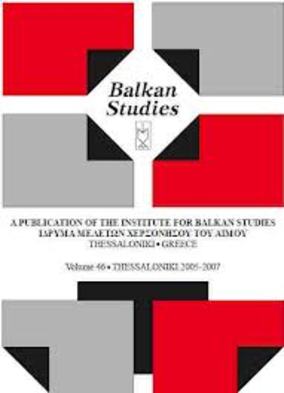The image of the Turks/Muslims in the Ottoman Greek Press 1830-1860
Part of : Balkan studies : biannual publication of the Institute for Balkan Studies ; Vol.38, No.1, 1997, pages 123-134
Issue:
Pages:
123-134
Section Title:
Articles
Author:
Abstract:
One of the results of the movement to reorganise the Ottoman state in the19th c. in line with Western Europe, was the evolution of an indigenous press.The importance of the press in promoting the efforts of the Government wasrecognised both by Sultan Mahmud II (1785-1839) and Mohammad Ali (1769-1849) governor and later viceroy of Egypt both of whom established their ownstate run newspapers in Istanbul and Cairo respectively. Their example wasfollowed very quickly by private individuals in Smyrna and Istanbul who sawthe press both as a business and as a means of promoting their political ideas,informing their Millet about what was going on, complaining about maladministration,advertising goods and services and promoting the cultural life oftheir readership.By the 1860’s all four initial millets (religious nations) of the OttomanEmpire i.e., Muslim, Orthodox Christian, Armenian and Jewish had developedtheir own press. The Muslims had produced eight newspapers. Five ofthem were state run, one was semi oficial and two were independent. TheArmenians sixteen and the Jews three and as far as I can ascertain all of themwere independent. The Orthodox Christians produced thirty three (twentyseven in Greek, one in Bulgarian and five in Turkish with Greek characters),all of them independent.In this paper I present the image of the Turks/Muslims as portrayed inthe Ottoman Greek press up to 1862. I begin by presenting how and in whatcontext the terms Turk and Muslim were used in that period. The Turks/Muslims appearing in the Greek press are divided into several distinct groups:the Sultan and his family, the rest of the government ministers, the localgovernment officials and ordinary people. I show the general trend of howeach group was treated in the Ottoman Greek press with examples of editorials, reports from local correspondents and individual letters from all over theEmpire. It appears that the image of the Turks/Muslims as portrayed in theGreek press is varied and the comments or explanations that accompany eachpositive or negative image of the Turks/Muslims give us an insight of whatGreeks in the Ottoman Empire found good or bad in the character, behaviourand customs of the Turks/Muslims as well as in the administration of theOttoman Empire, how they perceived and what they felt towards their Muslimcompatriots and the Ottoman government.
Subject:
Subject (LC):
Keywords:
Ottoman Greek Press 1830-1860, Turks-Muslims




